two-sided market
description: market having two distinct user groups that provide each other with network benefits
45 results
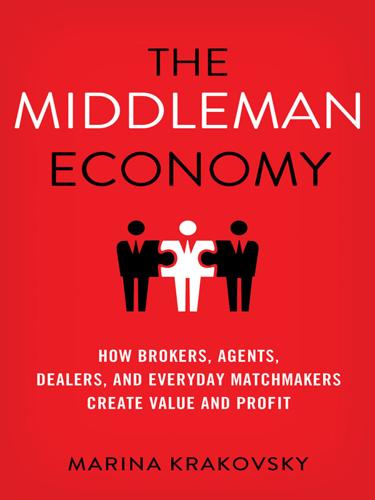
The Middleman Economy: How Brokers, Agents, Dealers, and Everyday Matchmakers Create Value and Profit
by
Marina Krakovsky
Published 14 Sep 2015
The huge space between those routes was begging for a wide, reasonably priced bridge, one that the vast majority of people would prefer to use. Thiers set out to build this bridge. Bridges as Two-Sided Markets * * * Lacking both experience and theoretical knowledge, she didn’t realize that the bridge she was trying to build had the interesting properties of what economists call a two-sided market. These days, two-sided markets (sometimes called two-sided networks or two-sided platforms) are everywhere because many of today’s Internet start-ups are middlemen businesses of exactly this type: whether you’re talking about connecting homeowners with guests (Airbnb) or drivers with fares (Lyft and Uber) workers with small jobs (TaskRabbit) restaurants with diners wanting take-out meals (GrubHub, Eat24) or doctors with patients (ZocDoc), you’re describing a two-sided market.
…
These days, two-sided markets (sometimes called two-sided networks or two-sided platforms) are everywhere because many of today’s Internet start-ups are middlemen businesses of exactly this type: whether you’re talking about connecting homeowners with guests (Airbnb) or drivers with fares (Lyft and Uber) workers with small jobs (TaskRabbit) restaurants with diners wanting take-out meals (GrubHub, Eat24) or doctors with patients (ZocDoc), you’re describing a two-sided market. At the same time, and maybe not coincidentally, the study of two-sided markets has become a popular field among academics, with many opinions about what counts as a two-sided market. One researcher I talked to, economist Marc Rysman of Boston University, told me there have been so many papers proposing their own definitions that he was “almost embarrassed to have participated in that literature.”35 Under some definitions, just about any market is two-sided, but such an inclusiveness makes the label useless.
…
Because buyers usually want to be where sellers are, and sellers usually want to be where buyers are, a two-sided network with an abundance of participants on one side tends to attract more comers on the other side. In the language of economics—and increasingly of tech investors—two-sided markets usually create “indirect network effects.”36 As one side grows, the network becomes more attractive to the other side, and as the other side grows, it attracts more users who want to connect with that side. This positive feedback loop promotes rapid growth once you reach critical mass. That’s why tech investors love network effects. But this same growth curve means two-sided markets are extremely hard to get off the ground, as Thiers found out firsthand: how do you get a sitter to sign up for a service that doesn’t have a single parent, and likewise, how do you get a parent to sign up for a service that has no sitters?
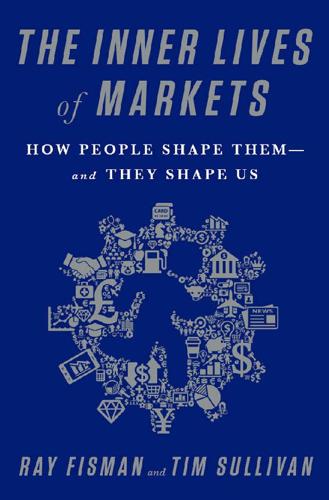
The Inner Lives of Markets: How People Shape Them—And They Shape Us
by
Tim Sullivan
Published 6 Jun 2016
Tirole also applied himself to the question of how to regulate credit cards, which in turn led to a series of papers that aimed to understand two-sided markets more broadly: examining why they exist, what makes them different from the one-sided variety, and how competing platforms like Visa and Amex vie for customers on both sides of their respective markets, and providing some guiding principles for builders of two-sided markets and the authorities that regulate them. Much of Tirole’s work on platforms takes as its starting point that a two-sided market is one where participants on either side couldn’t simply find one another and strike a bargain in the absence of the platform standing between them.13 If they could, then they wouldn’t need the services of the platform.
…
It just wants to sell tickets to a lot of players and make sure the game is played on its turf.7 To do so, you have to ensure that the players you let onto the field actually enhance the platform’s value, so both sides stick around to play. (Think about the value proposition at eBay if conmen dominated its sellers’ ranks.) Looking at a two-sided market through this lens—as a space where people meet and not just where trade takes place—is a new angle to understanding exchange. The difference between one-sided and two-sided markets is subtle but meaningful. It changes the way that we might approach the market as a business or a consumer. And it affects how a regulator decides whether a platform can govern itself, or if there’s a need to step in to impose some rules on the businesses using the platform.
…
In this case, stocking Google search results with more paid ads doesn’t do much to enhance the customer experience, so there’s a wide gap between what each side of the market pays to meet on Google. This state of affairs is entirely common in the realm of two-sided markets: many credit card companies don’t charge cardholders or even give them discounts, while merchants pay through the nose; shopping malls, a two-sided market from an earlier era, charge their tenants rent, while offering free parking and other inducements to attract shoppers. Sometimes the way that platforms charge can look perverse, until you understand the logic. Shopping malls charge their larger stores less money than smaller businesses because without those anchors to draw shoppers, the mall couldn’t exist.

Platform Revolution: How Networked Markets Are Transforming the Economy--And How to Make Them Work for You
by
Sangeet Paul Choudary
,
Marshall W. van Alstyne
and
Geoffrey G. Parker
Published 27 Mar 2016
Significant scholarly work has been done in this area. Two of this book’s authors (Geoff Parker and Marshall Van Alstyne) were among the first scholars to lay out the theory of two-sided market pricing.2 And the theory was mentioned as part of the 2014 Nobel Prize awarded to one of the other originators of two-sided market economics, Jean Tirole.3 Achieving the right balance among the complex factors involved in two-sided market pricing isn’t easy. Netscape, one of the pioneers of the Internet era, gave away browsers for free in hopes of selling web servers. Unfortunately, there was no proprietary connection between browsers and servers that Netscape could reliably control.
…
Parker and Van Alstyne, “Internetwork Externalities and Free Information Goods”; Geoffrey G. Parker and Marshall Van Alstyne, “Two-Sided Network Effects: A Theory of Information Product Design,” Management Science 51, no. 10 (2005); Eisenmann, Parker, and Van Alstyne, “Strategies for Two-Sided Markets.” 3. Jean-Charles Rochet and Jean Tirole, “Platform Competition in Two-Sided Markets,” Journal of the European Economic Association 1, no. 4 (2003): 990–1029. 4. Rob Hof, “Meetup’s Challenge,” Businessweek, April 14, 2005, http://www.businessweek.com/stories/2005-04-13/meetups-challenge. 5. Matt Linderman, “Scott Heiferman Looks Back at Meetup’s Bet-the-Company Moment,” Signal v.
…
What are the rules of the new economics of networks? Geoff and Marshall set about trying to answer these questions. It turned out to be a harder challenge than they expected. They ended up having to develop a new economic theory of two-sided networks. Their Harvard Business Review article “Strategies for Two-Sided Markets,” coauthored with Harvard professor Thomas R. Eisenmann, laid out what became one of the most widely taught theories of Internet business, one that is still taught in MBA programs around the world. Along with the work of other scholars, Geoff’s and Marshall’s insights helped to reshape mainstream thinking about business regulation.

Matchmakers: The New Economics of Multisided Platforms
by
David S. Evans
and
Richard Schmalensee
Published 23 May 2016
The card was still a good deal since consumers got free float for a couple of weeks and didn’t have to pay for making transactions. 17. “OpenTable Terms of Use,” http://www.opentable.com/info/agreement.aspx. 18. See Jean-Charles Rochet and Jean Tirole, “Platform Competition in Two-Sided Markets,” Journal of the European Economic Association 1, no. 4 (2003). As is increasingly common in academic economics, their paper was widely circulated several years before it appeared in print. The term “two-sided market” has fallen out of favor, as it has become clear that two- or multisidedness is an attribute of individual businesses, not necessarily of all businesses in a market. A nontechnical discussion of this paper and other early economic papers on multisided platforms is given by Richard Schmalensee, “An Instant Classic: Rochet & Tirole, Platform Competition in Two-Sided Markets,” Competition Policy International 10, no. 2 (2014). 19.
…
Then they had the insight that these businesses, and many others that look very different on the surface, have the same underlying business model. They all facilitate direct interactions between different types of customers. And they must use nontraditional, counterintuitive strategies to make money and survive. After working out a pioneering economic model, they wrote a paper, “Platform Competition in Two-Sided Markets,” which began circulating among economists in 2000.18 Economists now call these businesses multisided platforms because some of them actually facilitate interactions between more than two types of customers, as we will soon see. Jean Tirole received the Nobel Memorial Prize in Economic Sciences in 2014 for a number of important accomplishments, including his pioneering contributions to the new economics of multisided platforms.
…
Turbocharged matchmaker: A matchmaker, or multisided platform, that benefits from a significant combination of powerful computer chips, the Internet, the web, broadband communications, programming languages and operating systems, and the Cloud. Airbnb, for example, benefits from all of these technologies. Two-sided market: The original name used to refer to industries that had “two-sided platforms.” Two-sidedness is a characteristic of businesses, not always of industries, however. Two-step strategy: An ignition strategy in which the platform secures significant participation by one group and then secures participation by the other group by offering them access to the first group.

Open for Business Harnessing the Power of Platform Ecosystems
by
Lauren Turner Claire
,
Laure Claire Reillier
and
Benoit Reillier
Published 14 Oct 2017
Proserpio, ‘The Rise of the Sharing Economy: Estimating the Impact of Airbnb on the Hotel Industry’, Boston University, 27 January 2016. 8 As of 23 September 2016. 9 http://news.hiltonworldwide.com/assets/HWW/docs/brandFactSheets/HWW_ Corporate_Fact_Sheet.pdf. 10 www.marriott.com/marriott/aboutmarriott.mi. 11 As of 30 June 2016, www.accorhotels-group.com/en/brands/key-figures.html. 12 www.ihgplc.com/files/pdf/factsheets/factsheet_worldstats.pdf, 31 March 2015. 13 www.wyndhamworldwide.com/category/wyndham-hotel-group, June 2015. 14 Hyatt Hotels Q3 2016 earnings, available at http://investors.hyatt.com/files/doc_ financials/q3_2016/Q3-2016-Earnings-Release.pdf 15 See J. Rochet and J. Tirole, ‘Platform Competition in Two-Sided Markets’, Journal of the European Economic Association, 1(4), 2003, 990–1029. While Rochet and Tirole’s contribution formalised the economics of two-sided markets, academics before them also made significant contributions to the field. See for example G. Parker and M. Van Alstyne, Internetwork Externalities and Free Information Goods, New York, NY, Proceedings of the 2nd ACM Conference on Electronic Commerce, 2000, pp. 107–16.
…
Clark, Revolutionizing Product Development: Quantum Leaps in Speed, Efficiency and Quality, New York: Free Press, 1992. 4 T. Bresnahan and S. Greenstein, ‘Technological Competition and the Structure of the Computer Industry’, The Journal of Industrial Economics, 47, 1999, 1–40. 5 J. Rochet and J. Tirole, ‘Platform Competition in Two-Sided Markets’, Journal of the European Economic Association, 1(4), 2003, 990–1029. 6 Strictly speaking, businesses need not be Internet-enabled to have a platform business model (e.g. shopping malls or estate agents), but many of the platform businesses we What is a platform business? 7 8 9 10 11 12 13 14 15 16 17 18 19 29 will review in this book are digital platforms that have harnessed the power of the Internet and big data to develop their offerings, often globally.
…
Van Alstyne, ‘Two-Sided Network Effects: A Theory of Information Product Design’, Management Science, 51(10), 2005, 1494–504, subsequently developed a model of ‘two sided network externality’ capturing network effects, price discrimination and product differentiation. Mark Armstrong, ‘Competition in Two-Sided Markets’, RAND Journal of Economics, 37(3), September 2006, 668–91, also proposed a model of multisided markets built upon similar theoretical foundations (but focused on membership externalities, as opposed to usage ones, as originally modelled by Rochet and Tirole) and offered a generic definition based primarily on the scale of the benefits derived by one side of the market depending upon the size of the other side.
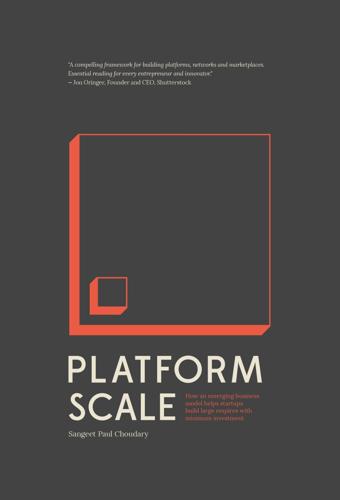
Platform Scale: How an Emerging Business Model Helps Startups Build Large Empires With Minimum Investment
by
Sangeet Paul Choudary
Published 14 Sep 2015
On many platforms, producers and consumers may be two distinct markets. The same user may upload and view videos on YouTube but the traveler and driver markets, on Uber, are largely distinct. The typical user, on these platforms, plays only one of the two roles. Serving two-sided markets requires reaching minimum traction on both sides. Hence, two-sided markets require building two companies, often with completely different challenges, not just building two forms of behaviors among users. FIVE DESIGN PRINCIPLES FOR SOLVING CHICKEN-AND-EGG PROBLEMS With the above characteristics in mind, a solution to any chicken-and-egg problem relies on five key design principles: 1.Finding A Compelling Bait To Start The Loop.The first step in breaking a vicious cycle is to find an inorganic bait that attracts and hooks one of the two roles without the need for the other role being present.
…
Facebook’s launch at Harvard University, and subsequently in similar closed markets, ensured that critical mass was reached a lot faster than the many Myspace copycats that were launching globally around that time. 4.Incentivizing The Role That Is More Difficult To Attract.Some user types may require more incentive to be pulled in. Acknowledging this is important, and is counterintuitive to the principles of traditional marketing. And finally, 5.Staging The Creation Of Two-Sided Markets.In general, the nature of two-sidedness only allows us to capture such markets one side at a time. However, we do observe exceptions in the strategies that follow. Finding the bait or incentive that brings in one role and enables them to remain while we get in the other role holds the key to succeeding with this model.
…
Tencent exploited the popularity of gaming and dating among Chinese youth and, in fact, created all the tools required for these use cases. This focus helped the company differentiate its services from competitors, which were too busy trying to be everything to everyone. Over time, the platform spilled beyond the initial use case to accommodate many different use cases. MAKE A TWO-SIDED MARKET ONE-SIDED The micro-market strategy works especially well when both production and consumption functions can be performed by the same target user. On Facebook, the same user creates and consumes content. On Yelp, the same user base would create and read reviews. The platform can target a single closed market and guarantee interactions.

After the Gig: How the Sharing Economy Got Hijacked and How to Win It Back
by
Juliet Schor
,
William Attwood-Charles
and
Mehmet Cansoy
Published 15 Mar 2020
One group—mainstream economists, management scholars, and the companies—points to digital innovation and market structure, in particular algorithms, crowdsourced information, and network effects.42 Sociologists, legal scholars, and political economists point to platforms’ ability to exploit the labor and capital of sellers and to evade regulation. Both sides have a point. Sharing platforms are “two-sided markets,” whose function is to coordinate individual buyers and sellers.43 Traditionally, anonymous person-to-person markets have been stymied by the time involved in searching for the right match (think yard sales) and the risk of transacting with an unknown individual. Platform technology solves both problems.
…
Cockayne argued that the use of sharing discourse was beneficial to the for-profit, transactional firms because of its positive connotations, a point we have also made. 42. Sharing platforms also employ mapping, logistics, and payment systems that are common to many digitally enabled businesses. Users often cite the cashless, backstage financial arrangements as an appealing feature of personalized exchange. 43. The classic statement on two-sided markets is Rochet and Tirole (2003). 44. Castillo, Knoepfle, and Weyl (2018). 45. Companies also program algorithms to allocate tasks to workers who sign up for more hours or who get higher ratings. 46. For a small number of occupations, workers must post bonds to ensure their performance. 47. There’s a question about how accurate the ratings are.
…
The McDonaldization of Society. 2nd ed. Thousand Oaks, CA: Pine Forge. Robinson, H. C. 2017. “Making a Digital Working Class: Uber Drivers in Boston, 2016–2017.” PhD diss., MIT Program in Science, Technology and Society. Rochet, Jean-Charles, and Jean Tirole. 2003. “Platform Competition in Two-Sided Markets.” Journal of the European Economic Association 1 (4): 990–1029. Rogers, Brishen. 2015. “The Social Costs of Uber.” University of Chicago Law Review 82:85–102. ———. 2016. “Employment Rights in the Platform Economy: Getting Back to Basics.” Harvard Law and Policy Review 10:479–520. ———. 2018.

Machine, Platform, Crowd: Harnessing Our Digital Future
by
Andrew McAfee
and
Erik Brynjolfsson
Published 26 Jun 2017
For instance, credit cards provide a valuable service to both consumers and merchants. In theory, credit card issuers could charge both halves of this two-sided market. In practice, they sometimes do exactly that: charging annual fees to consumers and processing fees of 2% or more to merchants. In fact, in the early days, almost all card issuers charged their users for the privilege of using the cards. But increasingly, instead of charging the users, they give them away for free to maximize demand. That way, they make more money on merchant fees on the other half of the two-sided market. By lowering the annual fees and other user charges on their cards, credit card issuers can not only increase the market share of the cards, but also increase the attractiveness of their networks to merchants, as well as the associated processing fees.
…
They have a variety of other levers to manage, including the user interface and user experience, reputation systems, marketing budgets, and core network technology. The most successful platform owners carefully curate the value that each side of the market gets from participating and aren’t too greedy. Once you understand the logic of two-sided markets, the next step is to apply it to multisided markets. Two-sided markets often become multisided markets with dozens or even thousands of distinct subgroups interacting through the platform. For instance, iTunes is a great way to get music on an iPhone. The more artists who put their music on iTunes, the more attractive it is to buy an iPhone.
…
As Uber has lowered prices, first with UberX and then with UberPool (and perhaps eventually with self-driving cars), demand has expanded greatly.** Uber very much wants to satisfy this demand by charging extremely low prices, since doing so will maximize its revenue. Figure 8 Most demand curves are not straight lines. Sometimes, they have this shape. But in two-sided markets, simply working its way down the demand curve is only a small part of the story. To better understand Uber’s pricing decisions, let’s revisit some of the economics of networks first introduced in Chapter 6 when we discussed WhatsApp. Like WhatsApp, Uber benefits from network effects. But unlike WhatsApp, telephones, or faxes or many other networks, Uber is a two-sided network.

Zucked: Waking Up to the Facebook Catastrophe
by
Roger McNamee
Published 1 Jan 2019
Google did something similar when it acquired YouTube, changing the algorithm in ways that, among other things, gave its own content preferred distribution. Google and Facebook operate a form of what economists call “two-sided markets,” which Wikipedia defines as “economic platforms having two distinct user groups that provide each other with network benefits.” The original two-sided markets included things like credit cards where the issuer sits between vendor and customer in a single transaction. For platforms, the two sides are not part of the same transaction. Users are the source of data, as well as the product, but they do not participate in a transaction or in the economics.
…
Users are the source of data, as well as the product, but they do not participate in a transaction or in the economics. The advertisers are the customer and provide the market’s revenue. What makes the platforms comparable to traditional two-sided markets is that both sides depend on the success (or scale) of the market. At the scale of Facebook and Google, the two-sided market confers advantages that cannot be overcome by competitors, providing monopoly power. Thanks to its search engine, cloud services, and venture capital operation, Google has an exceptionally good view of emerging products. Google has never been shy about using its market power to limit the upside of new companies, acquiring the best and snuffing out the rest.
…
Rowe Price, 24–27 Truman Show, The, 9, 126, 215, 245 Trump, Donald, 93–94, 113, 119, 125, 130, 154, 162, 174, 180–81, 183, 187, 199, 202, 209, 283 Russia and, 12, 111, 117; see also Russia see also presidential election of 2016 Trump Tower, 12, 111 trust, 2, 7, 125–27, 207, 236, 242, 263 Truth About Tech conference, 166, 167 Tufekci, Zeynep, 102, 193, 252–53 Tunisia, 243 Twitter, 63, 95, 102, 106, 110, 125, 183–84, 195, 233–35, 238–39, 243–45, 253, 256, 270, 278, 282, 283 Congress and, 122, 127–33 disinformation on, 177 fake accounts on, 265 Goldman’s tweets, 169–73 Jones and Infowars and, 228–29 Russia and, 121–24, 131, 169, 174 words associated with, 231 Twitter and Tear Gas (Tufekci), 252–53 two-sided markets, 139 Tylenol, 7, 148 U2, 13, 28–29, 167 Uber, 50, 148, 263 Unilever, 173 United Kingdom, 258 Brexit and, 8–9, 96, 180, 196, 198, 244 Parliament, 209 United Muslims of America, 131 United Nations, 178, 215, 265 Universal Music Group, 30 USA Today, 118, 231 U.S.
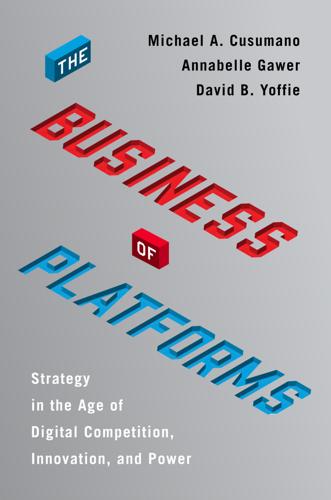
The Business of Platforms: Strategy in the Age of Digital Competition, Innovation, and Power
by
Michael A. Cusumano
,
Annabelle Gawer
and
David B. Yoffie
Published 6 May 2019
Cusumano, Platform Leadership: How Intel, Microsoft, and Cisco Drive Industry Innovation (Boston: Harvard Business School Press, 2002). 2.Annabelle Gawer and Michael A. Cusumano, “How Companies Become Platform Leaders,” MIT Sloan Management Review 49, no. 2 (Winter 2008): 28–35. 3.For a discussion of platform envelopment, see Thomas Eisenmann, Geoffrey Parker, and Marshall Van Alstyne, “Strategies for Two-Sided Markets,” Harvard Business Review, October 2006, 92–101. 4.David B. Yoffie and Michael A. Cusumano, Strategy Rules: Five Timeless Lessons from Bill Gates, Andy Grove, and Steve Jobs (New York: HarperBusiness, 2015). CHAPTER 1: PLATFORM THINKING: INTRODUCTION 1.Michael W. Miller, “High-Tech Saga: How Two Computer Nuts Transformed Industry Before Messy Breakup,” Wall Street Journal, August 27, 1986. 2.For accounts of this story, see Stephen Manes and Paul Andrews, Gates: How Microsoft’s Mogul Reinvented an Industry—and Made Himself the Richest Man in America (New York: Doubleday, 1993), 150–63; and Michael A.
…
The earlier database was constructed, cleaned, and analyzed by other research assistants at Harvard University (Daniel Nightingale and Damjan Korac) and the University of Surrey (Georges Xydopoulos). 25.Amazon, Inc., “Form 10K” (annual). Data cited is from 2017. Page 26 shows Amazon Web Services profit data. 26.On these platform market drivers, see Thomas Eisenmann, Geoffrey Parker, and Marshall Van Alstyne, “Strategies for Two-Sided Markets,” Harvard Business Review, October 2006, 92–101; and Parker, Van Alstyne, and Choudary, Platform Revolution. CHAPTER 2: WINNER TAKE ALL OR MOST: MORE THAN NETWORK EFFECTS 1.Andrei Hagiu and Simon Rothman also pointed out the limits of network effects. They cautioned platform companies not to focus on fast growth and, instead, create a solid base of trust with consumers and regulators.
…
They cautioned platform companies not to focus on fast growth and, instead, create a solid base of trust with consumers and regulators. See Andrei Hagiu and Simon Rothman, “Network Effects Aren’t Enough,” Harvard Business Review, April 2016. 2.For our conceptualization of the four market drivers, we are indebted to Thomas Eisenmann, Geoffrey Parker, and Marshall Van Alstyne, “Strategies for Two-Sided Markets,” Harvard Business Review, October 2006, 92–101. Also see Geoffrey Parker, Marshall Van Alstyne, and Sangeet Paul Choudary, Platform Revolution: How Platform Markets Are Transforming the Economy and How to Make Them Work for You (New York: W. W. Norton, 2016). 3.“Track Gauge in the United States,” Wikipedia, https://en.wikipedia.org/wiki/Track_gauge_in_the_United_States (accessed April 26, 2018). 4.For one source on the history, see AT&T, “Evolution of the SBC and AT&T Brands: A Pictorial Timeline,” http://www.att.com/Common/files/pdf/logo_evolution_factsheet.pdf (accessed April 26, 2018). 5.The concept of network externalities was apparently first introduced in the 1908 Bell Telephone annual report by the CEO, Theodore Vail, according to “Network Effect,” Wikipedia, https://en.wikipedia.org/wiki/Network_effect (accessed April 26, 2018).

The Content Trap: A Strategist's Guide to Digital Change
by
Bharat Anand
Published 17 Oct 2016
when it restricted its service Judd Cramer and Alan Krueger, “Disruptive Change in the Taxi Business: The Case of Uber,” National Bureau of Economic Research, Working Paper No. 22083, March 2016. “product versus platform” See also Jean-Charles Rochet and Jean Tirole, “Platform Competition in Two-Sided Markets,” Journal of the European Economic Association 1, No. 4 (June 2003), 990–1039; Mark Armstrong, “Competition in Two-Sided Markets,” RAND Journal of Economics , 37, no. 3 (Autumn 2006), 668–91; Jean-Charles Rochet and Jean Tirole, “Two-Sided Markets: A Progress Report,” RAND Journal of Economics , 37, no. 3 (Autumn 2006), 645–67. in 1996 Nick Statt, “Rare Pokemon Card Attracts Record-Breaking $50k Offers on eBay,” CNET , September 5, 2013.
…
Rob, Rafael, and Joel Waldfogel. “Piracy on the High C’s: Music Downloading, Sales Displacement, and Social Welfare in a Sample of College Students.” Journal of Law and Economics, 49, no. 1 (2006): 29–62. Rochet, Jean-Charles, and Jean Tirole. “Platform Competition in Two-Sided Markets.” Journal of the European Economic Association 1, no. 4 (June 2003): 990–1029. ———. “Two-Sided Markets: A Progress Report.” RAND Journal of Economics 37, no. 3 (Autumn 2006): 645–67. Rogers, Jim. The Death and Life of the Music Industry in the Digital Age. London: Bloomsbury Academic, May 9, 2013. Rohlfs, Jeffrey. “A Theory of Interdependent Demand for a Communications Service.”
…
The Long Tail: Why the Future of Business Is Selling Less of More. New York: Hyperion Books, 2008. Anton, James, and Dennis Yao. “Expropriation and Inventions: Appropriable Rents in the Absence of Property Rights.” American Economic Review 84, no. 1 (March 1994): 190–209. Armstrong, Mark. “Competition in Two-Sided Markets.” RAND Journal of Economics 37, no. 3 (Autumn 2006): 668–91. Arum, Richard, and Josipa Roksa. Academically Adrift: Limited Learning on College Campuses . Chicago: University of Chicago Press, 2011. Bagwell, Kyle. The Economics of Advertising. Cheltenham, UK: Edward Elgar. 2001 Barker, Rocky.
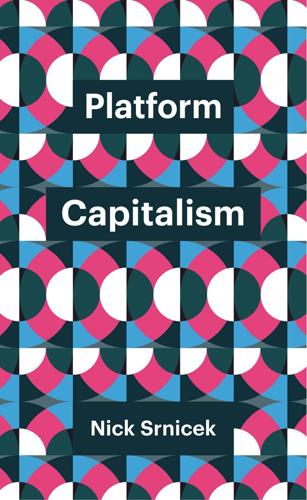
Platform Capitalism
by
Nick Srnicek
Published 22 Dec 2016
The Economist, 24 October. http://www.economist.com/news/briefing/21676760-americas-startups-are-changing-what-itmeans-own-company-reinventing-deal (accessed 4 June 2016). Rochet, Jean-Charles, and Jean Tirole. 2003. ‘Platform Competition in Two-Sided Markets’. Journal of the European Economic Association, 1 (4): 990–1029. Rochet, Jean-Charles, and Jean Tirole. 2006. ‘Two-Sided Markets: A Progress Report’. The RAND Journal of Economics, 37 (3): 645–67. Scheiber, Noam. 2015. ‘Growth in the “Gig Economy” Fuels Work Force Anxieties’. The New York Times, 12 July. http://www.nytimes.com/2015/07/13/business/rising-economic-insecurity-tied-to-decades-long-trend-in-employment-practices.html (accessed 4 June 2016).
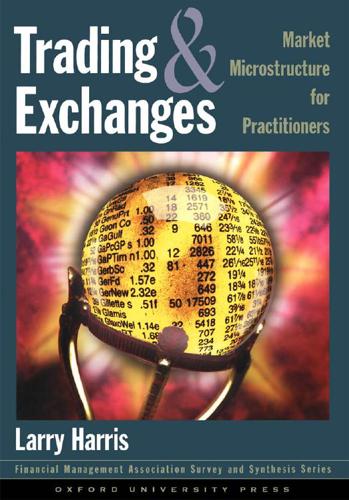
Trading and Exchanges: Market Microstructure for Practitioners
by
Larry Harris
Published 2 Jan 2003
The Inside Spread in RobertsonBooks.com Depending on the market, dealers may provide their quotes only on request, or they may quote continuous firm two-sided markets. Dealers in most corporate bond markets, and in some foreign exchange markets, quote only on request. Most organized quote-driven stock markets require that their registered dealers quote firm two-sided markets. For example, dealers in the Nasdaq Stock Market must continuously post firm prices at which they will trade. * * * ▶ The Inside Spread Charles, Cheryl, Goldie, Larry, and Teri are dealers in RobertsonBooks.com. Each quotes a two-sided market. Their quotes appear in table 13-1. Although each dealer’s bid/ask spread is 50 cents, the inside bid/ask spread is only 10 cents.
…
Realized spreads are usually smaller than quoted spreads because dealers occasionally trade at better prices than they quote and because they often adjust their bid and ask prices between trades. Dealers who quote both bid and ask prices quote a two-sided market. Their quotes make a market. Those who quote only one side quote a onesided market. Although most dealers will quote a two-sided market, they usually aggressively price only the side on which they would prefer to trade. For example, dealers who want to buy usually quote high (aggressive) bid prices to encourage sellers to sell to them. They also quote high uncompetitive ask prices to discourage buyers from buying from them.
…
Since the chooser will take the larger piece, the divider must try to divide the cake exactly in half to maximize his share. This solution is not entirely fair. The chooser has a slight advantage over the divider. If the divider cannot divide the cake exactly in half, a careful chooser will always take the bigger piece. The divider faces the adverse selection problem. When dealers quote two-sided markets, they divide the number line of possible prices into two parts. If they set their prices too low or too high, informed traders will take the more attractive side. To avoid adverse selection, dealers must set their bids below fundamental values and their offers above them. You can be confident that dealers offer fair prices when they quote tight bid/ask spreads before they know whether you want to buy or sell.
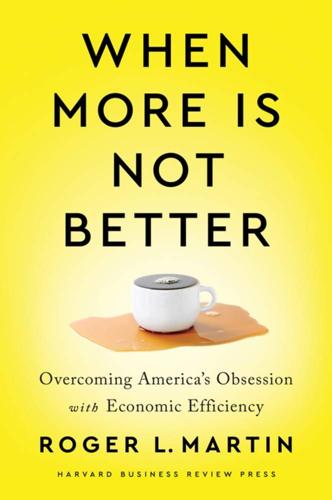
When More Is Not Better: Overcoming America's Obsession With Economic Efficiency
by
Roger L. Martin
Published 28 Sep 2020
The argument that the technology companies that preside over two-sided monopolies aren’t hurting consumers because their service is free is misguided. In a two-sided market, there are—as the name indicates—two sets of customers. For Google, for example, on one side is the search-engine user and on the other side is the advertiser seeking to communicate with that searcher. To say that Google couldn’t be causing harm as a monopolist because it doesn’t charge anything to the first customer is embarrassingly naive.14 The other set of customers—who increasingly get gouged as Google becomes more of a monopolist (or in fact a duopolist with Facebook) in the online-advertising market—matter as much as the first set in the two-sided market. It is no virtue to give something away to a certain audience so as to be able to gouge another audience.
…
See educators teaching See also educators certainty, 170–173, 181, 185 integrative approach to, 174 reductionism, 173–178 technology, 65, 66, 88–89 tenure-based voting rights, 157–159 theorizing, 178–179 Third Congressional District of Maryland, 202, 203 third-party candidates, 201–202 3G Capital, 123–124, 126, 187 tightly coupled systems, 106–107 Tilly, Charles, 192, 194 time-and-motion studies, 42 time horizons, 155–159 Tobin, James, 92 Tobin tax, 92, 103 Tocqueville, Alexis de, 198–199 Ton, Zeynep, 124–126 total quality management, 43 Toyota Production System, 43 Toys “R” Us, 97–98, 99, 101 trade free, 41–42, 56, 63, 66, 150–152 productive friction in, 150–152 trade barriers, 150 trade policy, 56, 150, 151 Trader Joe’s, 125 trade wars, 41 trading technology, 88–91 training, 125 transaction costs, 106 trickle-down economics, 161 Troubled Asset Relief Program (TARP), 138, 144 two-sided markets, 152–153 Uber, 192 unemployment, 24 United States, metaphor for, 26 University of Chicago, 24 US Census Bureau, 4 US Constitution, 40 US economy achieving balance in, 97–114 efficiency in, 63 as efficient machine, 21–44, 94, 100, 210 gaming the system and, 84–94 growth of, 33–38 imbalances in, 1–17 models of, 22–25 as natural system, 77–94 of 1970s, 5–12, 24 proxies in, 45–57 sectors, 22 user-experience (UX) design, 180 value creation, 130 Verizon, 53–54 voter registration, 205–206, 207 voters, 201–206 Voters Not Politicians, 204 wage growth, 9, 10, 68 wages, 67–70, 125, 150 Wagner School, 180 Wallace, George, 201 Wallenstein Feed & Supply (WFS), 133–134 Washington Mutual, 137 Waste Management Inc.
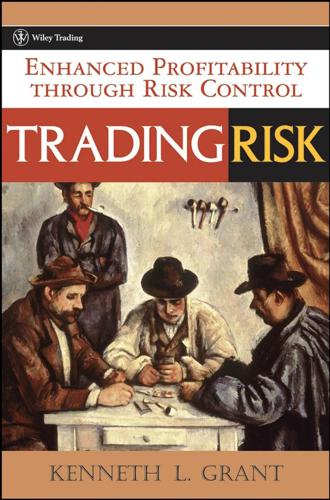
Trading Risk: Enhanced Profitability Through Risk Control
by
Kenneth L. Grant
Published 1 Sep 2004
Similarly, an account that is long IBM and short Microsoft is likely to carry less exposure than one that contains the same securities held on the same side of the market. As portfolios scale up in size, the need to operate on both sides of a given market becomes more pronounced, and I strongly urge this kind of two-sided market orientation as being one of the best means of maximizing risk-adjusted profitability. However, I should tell you that this challenge is, in my experience, one of the most difficult in advanced portfolio management. This is because most traders and, indeed, most markets lend themselves more directly toward a single-sided market orientation.
…
A portfolio that is entirely on one side of the market is exposed to the full fury of these episodes, which, as we have already discussed, are likely to cause all securities to move in lockstep with one another. Perhaps as important, Adjusting Portfolio Exposure (Rule 2) 137 the presence of some well-adapted two-sided market exposure will greatly enhance your ability to stay with your best ideas—across all market cycles—and thus capitalize in those situations when you feel a high level of conviction that a certain scenario will play out but less sure as to the precise timing. Let’s take a moment to more closely examine my assertion that a long/short position orientation also reduces the need to be absolutely accurate in terms of market timing, shall we?
…
Failing this, there’s always the opportunity to sell broad-based indexes, such as Standard & Poor’s (S&P) 500 futures, which will protect your position in some, if not all, of the types of situations that might otherwise force you to sell XTC before its time. If you are able to hold XTC through the approval process, you can call it a victory—irrespective of whether you liquidate your LSD, DRG, or S&Ps at a profit or at a loss. When viewed at a safely objective distance from the actual portfolio management process, it is easy to see how a two-sided market orientation, with one side serving largely as instruments of risk control, could offer better risk-adjusted returns than one that focused exclusively on either longs or shorts. Moreover, in these circumstances, it would be logical (and perhaps even in some cases desirable) that the aggregate P/L for the hedging side of the market would be negative.
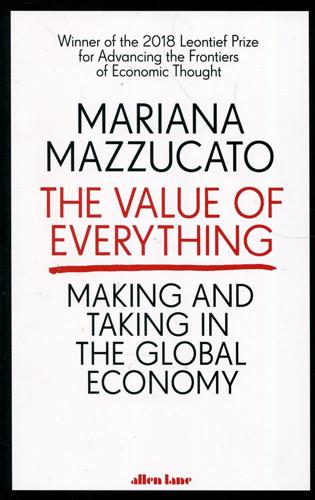
Value of Everything: An Antidote to Chaos The
by
Mariana Mazzucato
Published 25 Apr 2018
They don't face a traditional market, in which the firm produces a good or service and sells it to a population of potential consumers. They operate, instead, in what economists call two-sided markets, developing the supply and demand sides of the market as the lynchpin, connector or gatekeeper between them. On the one side, there is a service offering to users. On the other side, there is a market offering to other firms - from sales to advertising space to information on users' behaviour. Firms have long operated in more than one market. The peculiarity of two-sided markets, however, lies in how the two sides are connected. As the number of users on one side of the market (using a search engine or joining a social network) rises, clicks on ads and information on consumers' behaviour also increases, boosting profitability in the other side of the market.
…
The bulk of Google's profits come from selling advertising space and users' data to firms. If something is free online, you are not the customer, you are the product.64 Facebook's and Google's business models are built on the commodification of personal data, transforming through the alchemy of a two-sided market our friendships, interests, beliefs and preferences into sellable propositions. The so-called ‘sharing economy' is based on the same idea. For all the hype about ‘sharing', it is less about altruism and more about allowing market exchange to reach into areas of our lives - our homes, our vehicles, even our private relationships - that were previously beyond its scope and to commodify them.65 As Evgeny Morozov has warned, it risks turning us all into ‘perpetual hustlers',66 with all of our lives up for sale, while at the same time undermining the basis for stable employment and a good standard of living.
…
Six firms (Facebook, Google, Yahoo, AOL, Twitter and Amazon) account for around 53 per cent of the digital advertising market (with just Google and Facebook making up 39 per cent).71 Such dominance implies that online giants can impose their conditions on users and customer firms. Many book publishers, for example, are unhappy with the conditions Amazon insists upon and are asking for better ones. But they have no leverage at all, because - as Evgeny Morozov puts it - ‘there is no second Amazon they can turn to'.72 The powerful network effects in the two-sided market have entrenched these companies' position. Companies like Google are de facto monopolies.73 But they are not recognized as such and have not attracted the kind of anti-trust legislation that large companies in more traditional industries - tobacco, autos, food - have done. The dominant position of a platform provider in core markets can then be used to favour their products and services in satellite markets, further extending the company's reach.

Lean Analytics: Use Data to Build a Better Startup Faster
by
Alistair Croll
and
Benjamin Yoskovitz
Published 1 Mar 2013
In this model, the company makes money when a buyer and seller come together to complete a transaction. While eBay is undoubtedly the most famous example of a two-sided marketplace, the underlying pattern is fairly common. Consider the following business models, all of which have an aspect of a two-sided market: Real estate listing services allow prospective buyers to identify properties by a wide range of criteria, and then extract a fee for setting up the transaction, either as a one-time cost or a percentage. Indiegogo lets artists list projects and collect the support of backers. Backers are able to browse projects and find those they want to support.
…
A bigger inventory means more searches are likely to yield results. If you start to saturate your marketplace (i.e., if most of the sellers in your market have already become members), then your growth will come from increasing their listings and the effectiveness of those listings. Buyer Searches In many two-sided markets, searches are the primary way in which buyers find sellers. You need to track the number of searches that return no results—this is a lost sales opportunity. For example, you might track the change in daily searches, new listings, and result counts, which will show you whether you’re growing the business (see Table 13-7).
…
If this is your model, you’ll need to analyze how many sales failed to receive a bid (indicating overpricing), how many sold for the “Buy now” price (indicating underpricing), and the duration and outcome of auctions. You might use this information to improve the prices your sellers set—and your resulting revenues. Key Takeaways Two-sided markets come in all shapes and sizes. Early on, the big challenge is solving the “chicken and egg” problem of finding enough buyers and sellers. It’s usually good to focus on the people who have money to spend first. Since sellers are inventory, you need to track the growth of that inventory and how well it fits what buyers are looking for.

The Sharing Economy: The End of Employment and the Rise of Crowd-Based Capitalism
by
Arun Sundararajan
Published 12 May 2016
Varian and Carl Shapiro call this the “demand-side economies of scale” in their book Information Rules: A Strategic Guide to the Network Economy (Cambridge: Harvard Business Books, 1999). 23. See http://oz.stern.nyu.edu/io/network.html for more discussion of network effects. 24. Thomas R. Eisenmann, Geoffrey Parker, and Marshall W. Van Alstyne, “Strategies for Two-Sided Markets,” Harvard Business Review 96, 4 (2006): 581–595. https://hbr.org/2006/10/strategies-for-two-sided-markets. 25. Of course, there may be other traditional economies of scale that could lead to the eventual dominance of one or two firms because of several circumstances—by getting drivers to sign on and retaining them; or learning by doing in launching in a new market; or learning by doing in dealing with local regulators. 26.
…
You favor a platform that can get you accommodation anywhere in the world, rather than one that specializes in one city. Thus, on the Airbnb platform, network effects are more resilient. In a sense, the “fractal” structure of the network effects in both these examples makes their economics more complex than those of traditional two-sided markets, potentially making them either stronger or weaker. As I discuss in chapter 6, there are a number of new regulatory challenges raised by the emergence of the sharing economy. One that I do not discuss relates to the question of market power. This is because deepening our understanding the nature of these new network effects, or asking the question framed by Professor Maurice Stucke when he spoke at a June 2015 Federal Trade Commission panel about regulating the sharing economy—“Do I have the analytical tools to assess what the impact would be?”

Broken Markets: How High Frequency Trading and Predatory Practices on Wall Street Are Destroying Investor Confidence and Your Portfolio
by
Sal Arnuk
and
Joseph Saluzzi
Published 21 May 2012
Elimination of Stub Quotes The SEC did eliminate stub quotes, which were essentially placeholders for market makers that wanted only to quote one side of a market. Typically, stub quotes were placed far away from the market, often as low as one penny for a bid. For example, if a market maker wanted to place an offer to only sell stock, he would have to place a stub quote as a bid to create a two-sided market. When Accenture traded at $0.01 during the Flash Crash, the bid that was hit was a stub quote. According to the SEC Flash Crash report, “Executions against stub quotes represented a significant proportion of broken trades on May 6.”14 Eliminating stub quotes was a no-brainer in our opinion. What is needed, however, are more stringent market maker obligations.
…
They have no requirements to ‘maintain a fair and orderly’ market. They trade when it benefits them. If we experience another shock to the financial system, will this new (and dominant) type of pseudo market maker act in the interest of the markets when we really need them? Will they step up and maintain a two-sided market, or will they simply shut off the machines and walk away? Even worse, will they seek even further profit and exacerbate the downside?”34 Zero Hedge was relentless, publishing scores if not hundreds of posts in the year leading up to the crash criticizing HFT and the stock market and predicting a high-speed market meltdown.
…
They would have to supply real liquidity, not phantom liquidity, and they should not interfere when the market is working without their assistance. 2. There must be minimum quote sizes based on the market cap of the stock and a minimum order life on all orders. 3. To reward market makers for creating a more stable two-sided market, there also needs to be a minimum spread that is wider than a penny. No doubt, our critics will claim that this alternative is going in the wrong direction. They will say it is a step backward and will bring back all the problems that we had with the old NYSE specialist and NASDAQ market maker systems.
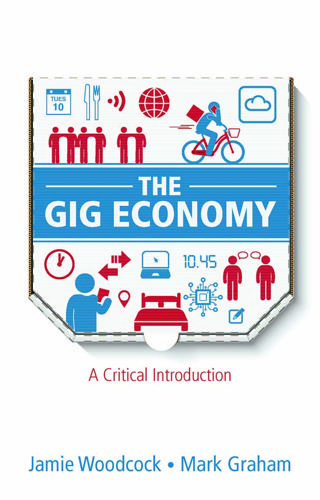
The Gig Economy: A Critical Introduction
by
Jamie Woodcock
and
Mark Graham
Published 17 Jan 2020
Platform infrastructure While we will return to the concept of ‘platforms’ in detail in chapter 2, it is worth noting how important platform infrastructure is as a precondition to the gig economy. The basic idea in the architectures of platforms that mediate work is to create a digital context in which buyers of labour power are able to connect with sellers of labour power (what economists call a ‘two-sided market’). Uber’s platform connects people who want a taxi ride with people who are willing to provide taxi rides. Fiverr’s platform connects people looking for a graphic designer or video editor with people offering those services. Unlike older ways of connecting buyers and sellers of work, digital platforms make much of the process relatively seamless for both parties.
…
Multiple gig economy models have emerged, ranging from general online freelancing platforms, which are necessarily limited in the amount of control that they can exert on work, to transportation and care work platforms, which are characterized by extremely high levels of explicit coordination and power asymmetry. But what all gig economy models have in common is a defining logic that seeks to shift maximal risk and minimal reward onto workers. Platform companies achieve this through technologies and infrastructures of connectivity that allow work to be organized via two-sided markets, political environments that impose few regulations, a zeitgeist that values flexibility, and a backdrop of increasing inequality that leads ever more workers to make the calculation that a bad job is better than no job. The gig economy is big, and around the world there are powerful interests who only seek to make it bigger.

Hit Refresh: The Quest to Rediscover Microsoft's Soul and Imagine a Better Future for Everyone
by
Satya Nadella
,
Greg Shaw
and
Jill Tracie Nichols
Published 25 Sep 2017
Something as simple as the color or size of a type font may profoundly impact the willingness of consumers to engage, triggering behavioral variations that may be worth tens of millions in revenue. Now Microsoft had to master this new approach to product design. Third, we had to be great at understanding and building two-sided markets—the economics of a new online business. On one side are the consumers who go online for search results, and on the other side are the advertisers who want their businesses to be found. Both are needed to succeed. This creates the auction effect I was describing earlier. Both sides of the business are equally important, and designing the experience for both sides is crucial.
…
See also specific products Tait, Richard, 7, 29 talent development, 117–18 TCI company, 28 teachers, 104, 106, 198, 226 teams and team building, 1, 39, 56, 107, 117–18 technology boom of 1990s, 24 democratizing and personalizing, 69 diffusion of, 216–17, 219 disruption and, 12 empathy and, 42–43 future of, 140–44 human performance augmented by, 142–43, 201 intensity of use, 217, 219, 221, 224–26 soul and, 68–69 transformation and, 11–12 TED talks, 180 telecommunications, 225 teleconferencing, shared-screen, 142 telegraph, 186 telepresence, 236 telerobotics, 236 tensor-processing unit (TPU), 161 Teper, Jeff, 29 terrorism, 172, 177–79 TextIt, 216 theoretical physicists, 162–64 think weeks, 64 32-bit operating systems, 29 Thiruvengadam, Arun, 187 Thompson, John, 14–15 3D printing, 228 three C s, 122–23, 141 Three Laws of Robotics, 202 ThyssenKrupp, 59–60 Tiger Server project, 30 time management model, 138 Tirupati, India, 19 topological quantum computing (TQC), 166 Toyota, 127 Tractica, 198 trade, 229–31, 236 training, 92, 227 transfer learning, 151, 153, 155 transformation, 11–12, 57, 67, 90 cloud and, 42, 55–56, 71 cultural (see culture, transforming) Trans-Pacific Partnership (TPP), 230–31 transparency, 135, 174–75, 191–92, 202, 204–6 Trump, Donald, 212, 230 trust, 56, 88, 107, 135, 169–94, 205, 236 Turing, Alan, 26 Turner, Kevin, 3 TV white space, 99, 225 Twilight Zone, The (TV show), 159 Twitter, 174 2001 (film), 201 two-in-one computers, 129 two-sided markets, 50 Uber, 44, 126, 153 uncertainty, 38, 111, 157 United Kingdom, 215, 236 United Nations, 44 U.S. Congress, 177, 211 U.S. Constitution, 187 U.S. Court of Appeals for Second Circuit, 177 U.S. Postal Service, 186 U.S. Supreme Court, 177, 185 universal basic income, 239–40 University of California at Santa Barbara, 162 University of Chicago, 29 University of Pennsylvania, 184 University of Wisconsin, 22–26 UNIX, 26, 29, 128 Upside of Inequality, The (Conard), 220 asphyxia in utero, 8 Vairavan, Dr., 23 values, 76, 182, 205 Vancouver, 92–93 Vanity Fair, 73–74 venture capital, 199 vice presidents, 118–19 videogames, 103, 106–8, 127 video-on-demand (VOD), 30 video surveillance cameras, 153 Vietnam, 170 virtual reality, 144–45, 228 visual crowding, 104 visual recognition, 76, 89, 150–51, 200 Visual Studio, 58, 59 vocational training, 227 Volvo, 153 Von Neumann, John, 26 WALL-E (film), 13 Wall Street Journal, 179, 230 Wal-Mart, 3 Washington Post, 80 Watsa, Prem, 20 Web, 49, 99.

The Payoff
by
Jeff Connaughton
They have no requirements to “maintain a fair and orderly” market. They trade when it benefits them. If we experience another shock to the financial system, will this new, and dominant, type of pseudo market maker act in the interest of the markets when we really need them? Will they step up and maintain a two-sided market, or will they simply shut off the machines and walk away? Even worse, will they seek even further profit and exacerbate the downside? One problem we faced—and one you may be experiencing as you read this chapter—is that HFT isn’t just mind-boggling. It’s mind-numbing. Senator Kay Hagan (D-NC), a fellow freshman who’d become Ted’s friend, was presiding in the chair on the day Ted gave the above speech.
…
For example, the SEC took for granted that high-frequency traders were the new market makers without taking into account the ways in which they differed from traditional market makers. Not only did the speed of HFT algorithms cripple the markets in a matter of minutes, but the absence of true market makers to guarantee two-sided markets in times of high volatility created an enormous liquidity shortage. Andrew Haldane, executive director for financial stability for the Bank of England, said that the flash crash demonstrates that HFT is “adding liquidity during a monsoon and absorbing it during a drought.” Although circuit breakers may make a crash less calamitous, they’re not a cure for regulatory ignorance.
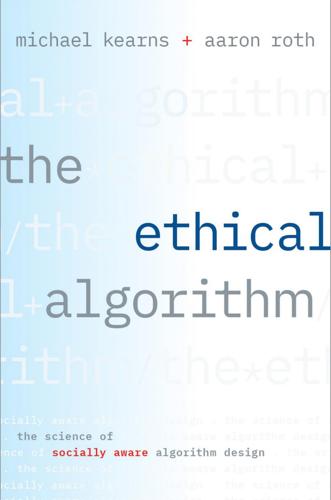
The Ethical Algorithm: The Science of Socially Aware Algorithm Design
by
Michael Kearns
and
Aaron Roth
Published 3 Oct 2019
For example, suppose the candidates Elaine and Saeed have the following ranked list of residencies (ignore the annotating characters for now, which we discuss shortly): Elaine Saeed Harvard Cornell Johns Hopkins UC San Diego @ UC San Diego & Harvard # Baylor Johns Hopkins Based on application materials and interviews, the schools of course also have their own ranked lists of candidates, such as: Harvard UC San Diego Saeed # Roger Elaine Saeed @ Roger Elaine & Gwyneth Mary So this is a two-sided market—candidates and hospitals—and there are also capacity constraints, because each candidate can of course take only one residency, and each hospital can only take a limited number of residents (which for simplicity we’ll assume is also just one). Thus, as with dating and commuting, we once again have a large system (many thousands of applicants, and hundreds of schools) of interacting, competing preferences and would like to specify a desirable solution—and a fast algorithm for finding one.
…
See also gender data and bias sexual orientation data, 25–26, 51–52, 86–89 Shapley, Lloyd, 129–30 The Shining (King), 118, 120 Shmatikov, Vitaly, 25 Simmons, Joe, 157–58 simple algorithms, 174 simulated game play, 134–35 single nucleotide polymorphisms (SNPs), 30–31 singularity, 180 Smith, Adam, 36 smoking, 27–28, 34–36, 39, 51–54 Snowden, Edward, 47–48 social awareness, 16–17, 131 social welfare, 97, 113, 115 societal norms and values, 12, 15–18, 20–21, 86, 134, 169–70 socioeconomic groups, 57 software engineers, 48–49 sorting algorithms, 4–5 spurious correlations, 150, 159 stable equilibriums, 99–100, 128 stable matchings, 128–30 standoffs, 98 statistics and adaptive data analysis, 159 and aggregate data, 22–23, 30–31 and algorithmic violations of fairness and privacy, 96 Bayesian, 38–39, 173 and the Bonferroni correction, 149 criminal sentencing, 14–15 and differential privacy, 40, 44–45, 47–52, 167 and fairness issues, 193–94 flawed statistical reasoning, 140–41 and interpretability of model outputs, 171–72 and investing scams, 138–41 and medical research, 34 and online shopping algorithms, 117 and p-hacking, 144–45, 153–55, 157–59, 161, 164, 169–70 statistical modeling, 90 statistical parity, 69–74, 84 and US Census data, 195 and “word embedding” models, 57–58, 63–64 stock investing, 81, 137–41 strategy, 97–102 Strava, 50–51 subgroup protections, 88–89 subjectivity, 86, 172 subpoenas, 41, 45–46, 48 “superfood” research, 143–44 superintelligent AI, 179–81, 185, 187 supervised machine learning, 63–64, 69–70, 183 supply and demand, 94–97 Supreme Court nomination hearings, 24 survey responses, 40–45 Sweeney, Latanya, 23 synthetic images, 132–35 target populations, 172–73 TD-Gammon program, 132 technological advances, 100–101, 103 TED Talks, 141–42 telemarketing calls, 38 temporal difference, 132 Tesauro, Gerry, 132 test preparation courses, 74–75 theoretical computer science, 11–13, 36 threshold rule, 75 Title VII, 15 tobacco research, 34–36 torturing data, 156–59 traffic and navigation problems, 19–20, 101–11, 113–15, 179 training data, 61–62 transparency, 125–26, 170–71 trust, 45–47, 170–71, 194–95 “truthfulness” in game theory, 114 “tunable” parameters, 37–39, 125–26, 171 Turing, Alan, 11–12, 180 Turing Award, 133 Turing machine, 11 23andMe, 54–55 2020 Census, 49, 195 Twitter Predictor Game, 52–53 two-route navigation problem, 107 two-sided markets, 127 2001: A Space Odyssey (film), 184 typing, 118 underspecified problems, 183 unintended consequences, 6–8, 16–17, 184–85, 188 unique data points, 26–27 unsupervised learning, 63–64 upstream effects, 194 US Census Bureau, 49 US Constitution, 49 US Equal Employment Opportunity Commission, 86–87 user identifiers, 24 user modeling, 121 user ratings, 118–21 US military deployments, 50–51 US State Department, 15 validation sets, 162–63 value alignment problems, 184 values.
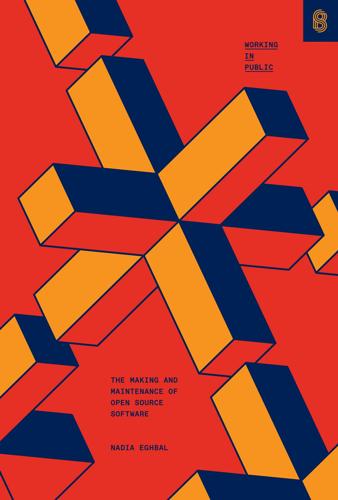
Working in Public: The Making and Maintenance of Open Source Software
by
Nadia Eghbal
Published 3 Aug 2020
Micropayments make the transaction about content, rather than about creators, but because there is so much freely available, highly substitutable content they create decision fatigue for consumers.362 Subscription models can operate like a freemium model, but they get even more interesting as a two-sided market. In a freemium model, a creator gives away some of their content for free, but restricts other content to those with paid subscriptions. The free content helps creators grow their reputation via public network effects. In a two-sided market, paying subscribers subsidize all of the content for nonpaying readers, under the assumption that creators aren’t actually selling content but a sense of membership and identity.

People, Power, and Profits: Progressive Capitalism for an Age of Discontent
by
Joseph E. Stiglitz
Published 22 Apr 2019
Chien, “Patent Assertion and Startup Innovation” (Santa Clara University of Law Legal Studies Research Paper Series 26-13, 2013). 35.Chicago economists defend these anti-competitive practices by saying that these restraints are just the natural way that efficient competition takes in two-sided markets. According to these economists, two-sided markets are just a “meeting place”—today, typically an electronic platform—for two sets of agents to interact with each other. Credit cards bring together customers with stores. They argue that courts shouldn’t interfere with the workings of markets. To say that these arguments ignore the actual workings of the marketplace is an understatement.
…
Nevertheless, with these arguments, they succeeded in persuading some courts—including the US Supreme Court in another one of its five-to-four split decisions—to allow these abuses of market power to continue. For an excellent discussion, see Benjamin E. Hermalin and Michael L. Katz, “What’s So Special About Two-Sided Markets?” in Martin Guzman, ed. Toward a Just Society (New York: Columbia University Press, 2018), 111-130. 36.The contract provisions are so strongly anticompetitive that even a firm with a small market share (like Discover Card) could and did charge exorbitant prices, far in excess of costs. Australia forbade these contracts, and the result was a much more competitive market, with lower fees charged to merchants—and lower profits for the credit card companies. 37.It also means that other consumers, such as those paying cash, are made worse off. 38.In a parallel case, employing much the same economic analysis, a dominant airline reservation system, Sabre, was found guilty of using analogous contractual provisions to restrain competition.

Who Gets What — and Why: The New Economics of Matchmaking and Market Design
by
Alvin E. Roth
Published 1 Jun 2015
MARKETS FOR BREAKFAST AND THROUGH THE DAY [>] sold “by sample”: See Jonathan Levin and Paul Milgrom, “Online Advertising: Heterogeneity and Conflation in Market Design,” American Economic Review 100, no. 2 (May 2010): 603–7. [>] Credit cards offered merchants: Credit cards are sometimes referred to by economists as “two-sided markets” because of the way they form a marketplace that needs to attract two different kinds of participants: merchants and consumers. One important strand of work focuses on how the two sides of the service should be priced; see, for example, Jean-Charles Rochet and Jean Tirole, “Two-Sided Markets: A Progress Report,” RAND Journal of Economics 37, no. 3 (Autumn 2006): 645–67. [>] they seldom switch cards: See Lawrence M. Ausubel, “The Failure of Competition in the Credit Card Market,” American Economic Review 81, no. 1 (March 1991): 50–81. [>] middlemen: For competition among middlemen, see Benjamin Edelman and Julian Wright, “Price Coherence and Adverse Intermediation” (working paper, Harvard Business School, Cambridge, MA, December 2013). 3.
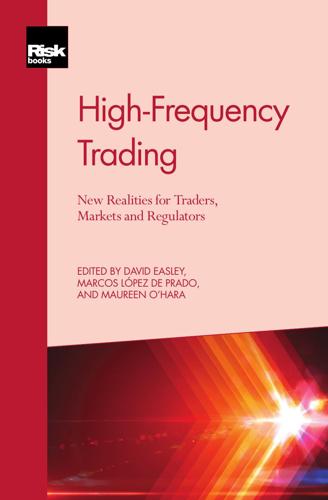
High-Frequency Trading
by
David Easley
,
Marcos López de Prado
and
Maureen O'Hara
Published 28 Sep 2013
Two liquidity measures are calculated: the percentage of time that traders of each group provide two-sided liquidity, and bid–offer spread compiled on a one-second grid and averaged over 10-minute time intervals, with USD/JPY, EUR/JPY currency pairs for BOJ intervention, and EUR/CHF, USD/CHF currency pairs for SNB intervention. The BOJ intervention at 01h00 GMT on August 4, 2011, caused a sharp jump in the USD/JPY exchange rate that did not disrupt the two-sided market. MTs provided liquidity 100% of the entire intervention time, while HF traders and slow AI failed to provide two-sided liquidity only for two seconds and eight seconds, respectively. UHF traders provided only intermittent liquidity during first 79 i i i i i i “Easley” — 2013/10/8 — 11:31 — page 80 — #100 i i HIGH-FREQUENCY TRADING the 10 minutes after intervention and withdrew from the market for several minutes around 02h40 GMT.
…
Liquidity provided by slow AI users for the USD/CHF exchange rate had notable gaps prior to the SNB intervention. The intervention briefly decreased the percentage of time for which all customer groups quoted two-way prices. HF traders were the quickest, while UHF traders were the slowest in restoring the two-sided market. HF traders were the most active in setting the bid–offer spread during and after the intervention. For the EUR/CHF exchange rate, MTs and HF traders were the best liquidity providers during the SNB intervention. While the SNB intervention affected the EUR/USD exchange rate, its liquidity was not impaired.

Enshittification: Why Everything Suddenly Got Worse and What to Do About It
by
Cory Doctorow
Published 6 Oct 2025
We can create the digital nervous system we need to connect and coordinate us through a twenty-first century haunted by climate collapse, genocide, authoritarianism, and economic chaos. We can create enshittification-resistant infrastructure for a new, good world. Part One The Natural History Enshittification infects a specific kind of digital business: platforms. The term platform gets thrown about a lot. Formally, a platform is a business that operates a two-sided market, that is, a system that connects business customers and end users. In its purest form, a platform’s value comes from the people and companies that use it, not from anything it brings to the table. The more people there are selling things on an e-commerce platform, the more value that platform holds for shoppers.
…
Meanwhile, rival taxi companies shuttered, unable to compete with Uber thanks to the company’s labor misclassification, in which Uber pretended its employees were independent contractors and got away with it because Uber did it “with an app.” Uber now dominates urban transportation in many US and global cities, and it has used its monopolistic power to drive up prices—but it has also used its monopsonistic power to drive down drivers’ wages. Platforms aspire to both monopoly and monopsony. After all, platforms are “two-sided markets,” brokering between buyers and sellers. What’s more, the consumer welfare standard theory of antitrust is far more tolerant of monopsonistic conduct—where costs are lowered by squeezing workers and suppliers—than it is of monopolistic conduct, where prices are raised. Broadly speaking, when companies use their market power to drive prices down, they can do so without fear of regulatory reprisals.
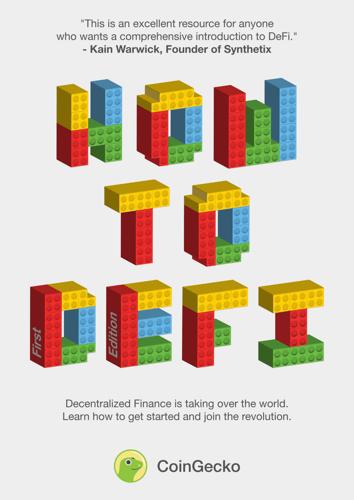
How to DeFi
by
Coingecko
,
Darren Lau
,
Sze Jin Teh
,
Kristian Kho
,
Erina Azmi
,
Tm Lee
and
Bobby Ong
Published 22 Mar 2020
Nexus Mutual Opyn Covers Against Smart Contract Hacks Technical, financial, admin key risks Claims Approval Yes – Voting No – immediate withdrawal upon claim Coverage Any Smart Contract on mainnet (Wider coverage) Compound and Curve (Limited coverage) Liquidity Coverage Pools Two-Sided Market Fully Collateralized No Yes Common Capital Pool Yes No Pricing Nexus pricing algorithm & Risk Assessors Depends on the supply and demand of the market, mainly via Uniswap ~ Opyn: Step-by-Step Guide Step 1 Go to https://opyn.co/ and click get started. We will be insuring some DAI on Compound Step 2 Since we have 20 DAI on Compound, we wish to buy insurance for them Step 3 After clicking Buy Insurance, we will be redirected here Click confirm and confirm the transaction Step 4 As you can see we got ocDai in exchange for our ETH Note that the amounts are different. 1 ocDAI covers 1 cDAI, not 1 DAI.
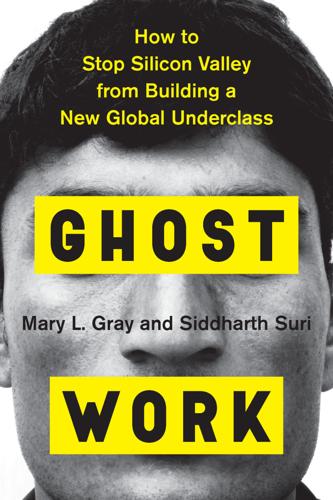
Ghost Work: How to Stop Silicon Valley From Building a New Global Underclass
by
Mary L. Gray
and
Siddharth Suri
Published 6 May 2019
Other times, they’re simply, glibly called gigs.9 No employment laws capture the on-demand gig economy’s odd mix of independence from any single employer and dependency on a web-based platform. As the taskmasters of the gig economy, on-demand platforms make their money by matching those buying and selling human labor online, generating a two-sided market of myriad businesses and anonymous crowds of workers. And, importantly, as media scholar and sociologist Tarleton Gillespie points out, platforms may not create the content that they host, “but they do make important choices about it.”10 On-demand work platforms can easily become silent business partners more aligned with the interests of those willing to pay a fee to find workers than with the workers searching for jobs.
…
Since 2015, companies buying and selling on-demand work have tiptoed cautiously around any activity that makes them look as if they are doing anything other than providing an online meeting place and matching service between people with jobs to be filled and workers willing and able to work. On-demand ghost work platforms see themselves as neutral parties, arguing that they are the software serving as the middlemen managing what economists call a two-sided market. They connect requesters seeking workers, on one side of the platform’s marketplace, and workers seeking jobs, on the other side. And in the absence of set hours, work sites, or agreement about who’s the official boss in charge, it is difficult to gauge how much ghost work is done across this burgeoning industry, who’s paying for it, and which workers are completing the tasks.

Custodians of the Internet: Platforms, Content Moderation, and the Hidden Decisions That Shape Social Media
by
Tarleton Gillespie
Published 25 Jun 2018
Burgess, “From ‘Broadcast Yourself’ to ‘Follow Your Interests.’” 66Gehl, “The Archive and the Processor”; Couldry and van Dijck, “Researching Social Media as if the Social Mattered.” 67Gillespie, “The Politics of ‘Platforms.’” 68Marc Andreessen, “The Three Kinds of Platforms You Meet on the Internet,” Blog.Pmarca.Com, June 15, 2010, http://pmarchive.com/three_kinds_of_platforms_you_meet_on_the_internet.html; Bogost and Montfort, “Platform Studies.” 69Gawer, “The Organization of Technological Platforms”; Gawer, Platforms, Markets, and Innovation; Rochet and Tirole, “Platform Competition in Two-sided Markets”; van Couvering, “The Political Economy of New Media Revisited”; Mansell, “The Public’s Interest in Intermediaries.” 70John Herrman, “Platform Companies Are Becoming More Powerful—but What Exactly Do They Want?” New York Times, March 21, 2017. https://www.nytimes.com/2017/03/21/magazine/platform-companies-are-becoming-more-powerful-but-what-exactly-do-they-want.html. 71Ananny, “From Noxious to Public?”
…
Safiya Umoja Noble and Brendesha Tynes, 147–59. New York: Peter Lang. http://ir.lib.uwo.ca/commpub/12/?utm_source=ir.lib.uwo.ca%2Fcommpub%2F12&utm_medium=PDF&utm_campaign=PDFCoverPages. ———. 2017. “Content Moderation.” http://escholarship.org/uc/item/7371c1hf.pdf. ROCHET, JEAN-CHARLES, AND JEAN TIROLE. 2003. “Platform Competition in Two-Sided Markets.” Journal of the European Economic Association 1 (4): 990–1029. ROGERS, KEVIN. 2013. “Jailbroken: Examining the Policy and Legal Implications of iPhone Jailbreaking.” Pittsburgh Journal of Technology Law and Policy 13 (2). ROTH, LORNA. 2009. “Looking at Shirley, the Ultimate Norm: Colour Balance, Image Technologies, and Cognitive Equity.”

The Measure of Progress: Counting What Really Matters
by
Diane Coyle
Published 15 Apr 2025
Survey on computer software and information technology enabled services exports: 2022-23 [Press release]. https://www.rbi.org.in/scripts/BS _PressReleaseDisplay.aspx?prid=56542 Robinson, J. (1980). Time in economic theory. Kyklos, 33, 219–229. Rochet, J.-C., and Tirole, J. (2003). Platform competition in two-sided markets. Journal of the European Economic Association, 1(4), 990–1029. Rochet, J.-C., and Tirole, J. (2006). Two-sided markets: A progress report. RAND Journal of Economics, 37(3), 645–667. Rodriguez, S. (2016, August 17). Meet the Airbnb of 3-D printing. Inc. https://www.inc.com /salvador-rodriguez/fictiv-is-the-airbnb-of-3d-printing.html Rodrik, D. (2016).
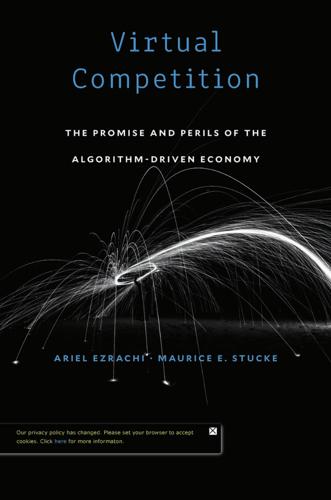
Virtual Competition
by
Ariel Ezrachi
and
Maurice E. Stucke
Published 30 Nov 2016
This economic framework is “often associated with the eminent economist Professor Joseph Schumpeter,” who suggested, “firms with market power will have the greatest incentive to innovate because of their large relative size and dominant position in a market” D. L. Weisman and R. B. Kulick, “Price Discrimination, Two-Sided Markets, and Net Neutrality Regulation,” Tulane Journal of Technology and Intellectual Property 13 (2010): 81, https://www.researchgate.net/profile/Dennis_Weisman /publication/228307995_Price _Discrimination _Two-Sided _ Markets _ and _Net _Neutrality_Regulation/links/0deec5187eadf2a5c8000000.pdf. 7.
…
This approach, generally associated with Nobel laureate economist Kenneth Arrow, suggests “the increased business generated by an innovation will come mostly from sales that formerly would have gone to competitors, while monopolists may largely cannibalize their own business”; Weisman and Kulick, “Price Discrimination, Two-Sided Markets, and Net Neutrality Regulation.” 8. “The reason why price discrimination may intensify competition is that with uniform pricing, firms would only compete for ‘marginal consumers’ whereas through price discrimination, firms can compete for all customers, including those with strong loyalty to a competitor’s brand”; Papandropoulos, “How Should Price Discrimination Be Dealt with by Competition Authorities?”
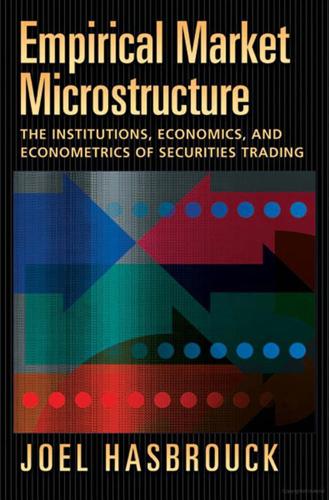
Empirical Market Microstructure: The Institutions, Economics and Econometrics of Securities Trading
by
Joel Hasbrouck
Published 4 Jan 2007
In these instances, continuous liquidity requires that a dealer be designated as such (by the market authority) and provided with additional incentives. Perhaps the best-known designated dealer is the NYSE specialist. The specialist has many roles and responsibilities, but an important one is maintaining a two-sided market when there is nothing on the limit order book and no one else on the floor bidding or offering. Establishing the proper incentives for designated dealers, though, has proven to be difficult. The issues involve measuring the liquidity that the dealers provide, determining the beneficiaries of this liquidity, allocating the costs, and balancing the rights of dealers against the public TRADING MECHANISMS users of limit orders (who are usually the dealers’ direct competitors).

Humans as a Service: The Promise and Perils of Work in the Gig Economy
by
Jeremias Prassl
Published 7 May 2018
There are two closely related challenges to the on-demand economy’s claim to have fostered a revolutionary culture of innovation: first, that many of its supposedly innovative elements are, in fact, simply aimed at entrench- ing existing operators against future competitors; and second, that platforms’ business models might in fact disincentivize the investment in research, development, and working conditions that spurs innovation. Pernicious Innovation Take rating algorithms as an example. The dramatic increase in information available about workers and consumers alike has gone a long way towards alleviating the information asymmetries that traditionally plague two-sided markets. The case for productivity-enhancing innovation looks straightfor- ward: extensive information allows for easy matching of supply and demand, increasing service provision for platform users, and income for workers. Upon closer inspection, however, not all is quite as it seems. As we saw in the previous chapter, two of the most important functions of algorithmic * * * 88 The Innovation Paradox ratings are to control workers—and to lock them into a particular app’s ‘eco-system’: ratings need to be built up over time and cannot be taken from one platform to another.

Simple Rules: How to Thrive in a Complex World
by
Donald Sull
and
Kathleen M. Eisenhardt
Published 20 Apr 2015
Brian and Joe realized this market might be bigger than they first thought. They soon launched Air Mattress Bed & Breakfast, later Airbnb. Airbnb is among the most successful of the shared-economy companies. Unlike many traditional businesses, shared-economy companies have no single base of customers. Rather, these companies provide two-sided markets that connect sellers (or people with something to share) with buyers (who are willing to pay for the product or service)—like the transportation-network company Lyft, which connects passengers who need a ride to drivers who have a car, and TaskRabbit, an errand-outsourcing company that connects people who need something done with “taskers” who will do the job.

Market Sense and Nonsense
by
Jack D. Schwager
Published 5 Oct 2012
The key question an investor needs to ask is whether the implications of the past track record are pertinent for the future. It some cases, they will not be. For example, the track record of an equity hedge manager that coincides with a bull market may not be at all indicative of how the manager could be expected to fare in a more two-sided market, let alone a bear market. In some cases, a good track record may reflect excessive risk taking in a benign environment rather than manager skill. In order to assess the relevance of a past track record, an investor needs to understand the source of the past gains and the risks taken to achieve them. 1 Of course, many credit-based managers did well during 2003–2007 without taking on excessive credit risk exposure.
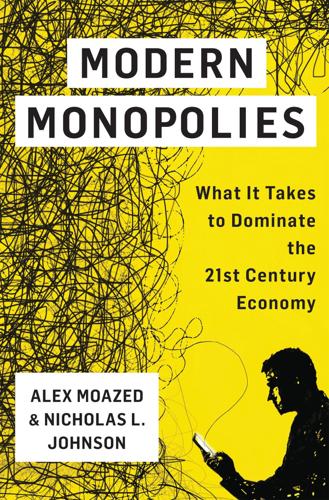
Modern Monopolies: What It Takes to Dominate the 21st Century Economy
by
Alex Moazed
and
Nicholas L. Johnson
Published 30 May 2016
In fact, the Elite Squad quickly became the backbone of Yelp’s early marketing strategy. It’s a great example of a company quickly scaling the network effects ladder to establish a strong sense of community where it matters most. 6. Target a User Group to Fill Both Sides The idea behind this strategy is similar to number 3: Try to make a two-sided market one sided. The goal here is to find a user group that can fill both the consumer and producer roles. That way you no longer need to worry about attracting and balancing two separate user groups early on. This strategy was the recipe for success for handmade goods platform Etsy. Etsy’s early research indicated that the people most likely to buy handmade goods were the people who also sold them, so the company decided to focus on this user group to fill out both sides of its marketplace before expanding to other audiences.
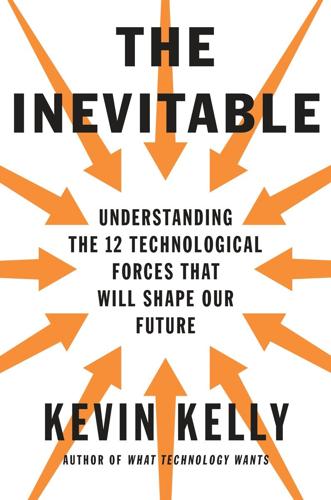
The Inevitable: Understanding the 12 Technological Forces That Will Shape Our Future
by
Kevin Kelly
Published 6 Jun 2016
Since Apple kept adding ingenious new ways to interact with the phone, including new sensors such as a camera, GPS, and an accelerometer, thousands of novel species of innovations deepened the iPhone ecology. A third generation of platforms further expanded the power of the marketplaces. Unlike traditional two-sided markets—say, a farmers’ market that enables buyers and sellers—a platform ecosystem became a multisided market. A good example of this is Facebook. The firm created some rules and protocols that formed a marketplace where independent sellers (college students) produced their own profiles, which were matched up in a marketplace with their friends.

Why Startups Fail: A New Roadmap for Entrepreneurial Success
by
Tom Eisenmann
Published 29 Mar 2021
Examples include trusted brand names: Fiona Southey, “Rouqette ‘Significantly Increases’ Pea Protein Supply Deal with Beyond Meat,” Food Navigator website, Jan. 16, 2020. With network effects: For perspective on how network effects influence customer perceptions of a product’s value, see Thomas Eisenmann, Geoffrey Parker, and Marshall Van Alstyne, “Strategies for Two-Sided Markets,” Harvard Business Review, Oct. 2006; Thomas Eisenmann, “Platform-Mediated Networks: Definitions and Core Concepts,” HBS course note 807049, Sept. 2006 (Oct. 2007 rev.); Geoffrey Parker, Marshall Van Alstyne, and Sangeet Choudary, Platform Revolution: How Networked Markets Are Transforming the Economy and How to Make Them Work for You (New York: W.

System Error: Where Big Tech Went Wrong and How We Can Reboot
by
Rob Reich
,
Mehran Sahami
and
Jeremy M. Weinstein
Published 6 Sep 2021
The countercultural notion of a free and uncontrolled cyberspace has given way to the new mantra of “blitzscaling,” where companies grow as quickly as possible to grab a dominant market position, demonstrate hockey-stick growth to their investors, and lock in any potential network effects before competitors can respond. The monopolistic tendencies of two-sided markets that often appear on the internet only serve to reinforce the “winner-take-all” dominance of the largest players in each market. Name the largest online auction site? eBay. Name the second largest? Who knows. Buyers want to go to the place with the most sellers, and sellers want to go to the place with the most buyers.

Arriving Today: From Factory to Front Door -- Why Everything Has Changed About How and What We Buy
by
Christopher Mims
Published 13 Sep 2021
A world in which autonomous trucks have taken all the plum gigs—regular routes over long distances, for example—is just as likely to be one in which independent contractors continue to be exploited as they haul goods between the hubs served by autonomous trucks, says sociologist Steve Viscelli. In this future, something like an “Uber for freight hauling” would mean the same downward pressure on wages that such marketplaces for labor have always meant. As one economist who worked with actual Uber data discovered, the wage that workers in such fluid, two-sided markets for unskilled labor inevitably garner is whatever the local minimum wage happens to be. It would be a future for truck drivers not unlike our present for workers in, for example, Amazon warehouses. It would mean more jobs, but all of them more surveilled, controlled by algorithm, and Taylorized than ever.
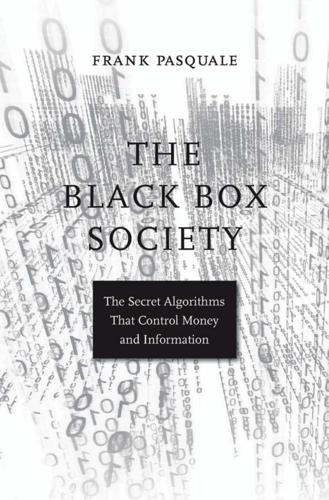
The Black Box Society: The Secret Algorithms That Control Money and Information
by
Frank Pasquale
Published 17 Nov 2014
But in the digital realm, monopolistic cable firms are angling to impose a similar arrangement: to make Internet access cheap if paired with their own content, and pricier if used to access others’ work. Similarly, firms like Google and Amazon are in prime position to make money off both sides of a two-sided market: monetizing our data and purchases, while promoting to us their own products and ser vices, or those of “partners” who let the larger platform share in their profits. That’s one reason we need to look back to the legal principles that animated Populists and Progressives in response to America’s first Gilded Age.

The Age of Surveillance Capitalism
by
Shoshana Zuboff
Published 15 Jan 2019
Roben Farzad, “Google at $400 Billion: A New No. 2 in Market Cap,” BusinessWeek, February 12, 2014, http://www.businessweek.com/articles/2014-02-12/google-at-400-billion-a-new-no-dot-2-in-market-cap. 92. “Largest Companies by Market Cap Today,” Dogs of the Dow, 2017, https://web.archive.org/web/20180701094340/http://dogsofthedow.com/largest-companies-by-market-cap.htm. 93. Jean-Charles Rochet and Jean Tirole, “Two-Sided Markets: A Progress Report,” RAND Journal of Economics 37, no. 3 (2006): 645–67. 94. For a discussion on this point and its relation to online target advertising, see Katherine J. Strandburg, “Free Fall: The Online Market’s Consumer Preference Disconnect” (working paper, New York University Law and Economics, October 1, 2013). 95.

Stigum's Money Market, 4E
by
Marcia Stigum
and
Anthony Crescenzi
Published 9 Feb 2007
Regularly issued bills include 4-week, 3-month, and 6-month maturities. Also referred to as a T-bill. TT&L account: Treasury tax and loan account at a bank. turnaround: Securities bought and sold for settlement on the same day. turnaround time: The time available or needed to effect a turnaround. two-sided market: A market in which both bid and asked prices, good for the standard unit of trading, are quoted. two-way market: Market in which both a bid and an asked price are quoted. underlier: The thing against which an option is written. The underlier may be a stock, a bond, a futures contract, oil, land, whatever.